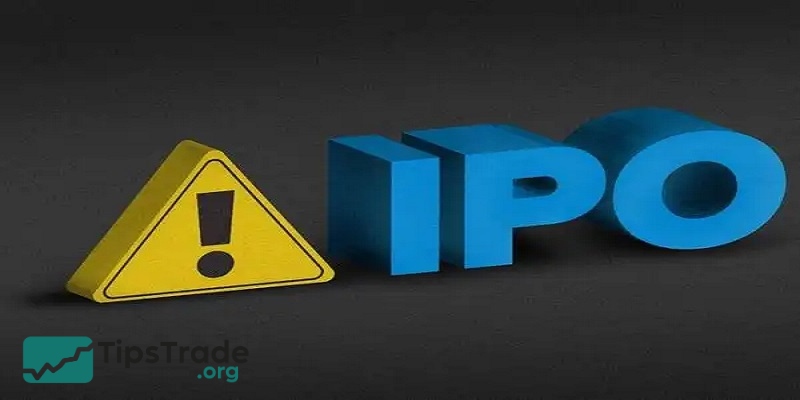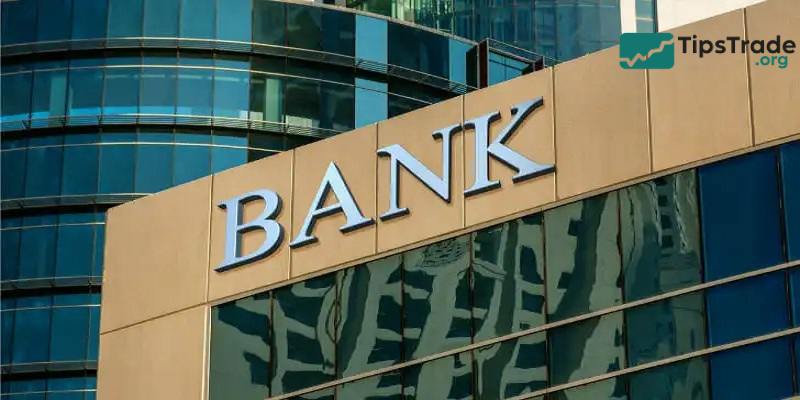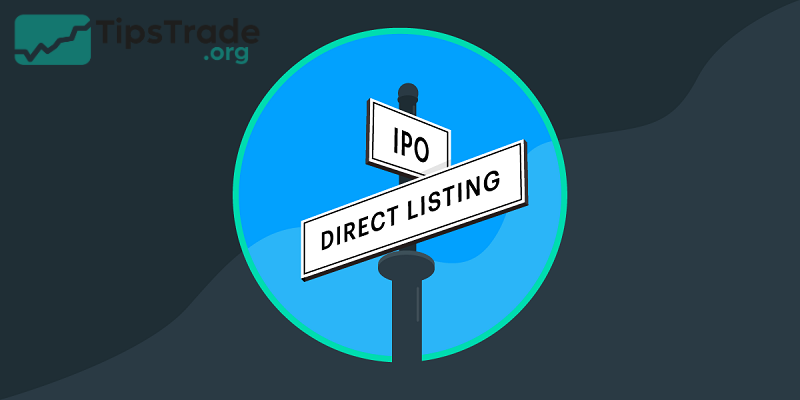IPO process is one of the most common methods of raising capital today. However, this term is still quite unfamiliar to many first-time investors entering the market. So, what is the IPO process? How is the IPO process carried out? Let’s explore this right away with Tipstrade.org in the article below.
What is the IPO process?
IPO process stands for Initial Public Offering, which means the first public offering. This concept refers to the issuance of shares and the first listing on the stock exchange of a joint stock company. Before an IPO process, companies are usually privately owned or owned by investment organizations. After an IPO process, the company officially issues shares and investors have the right to buy and sell these shares publicly on the stock exchange.

>>Related posts
- Stock Issuance: A Detailed A-to-Z Guide for Investors
- What is Stock Valuation? Notes When Valuation Of Stocks
- Fundamental Analysis Stocks: Everything Investors Need to Know
- Technical Analysis for Stocks: The Complete Guide for Modern Investors
Why do companies decide to go through the IPO process?
More and more businesses are conducting IPO process and becoming public companies. Because this activity brings many attractive benefits.
- Companies conduct IPO process with the main and biggest purpose of capital mobilization. Therefore, it can be concluded that if a company needs to expand its business by conducting an IPO. IPO activities not only bring high efficiency in capital mobilization but also very quickly. Accordingly, after the shares are listed on the stock exchange, the company will quickly and successfully mobilize investment capital.
- In particular, companies always choose IPO because this activity brings many other benefits. For example, IPO helps companies increase their position and reputation in the market. IPO deals will often attract a lot of public attention and be mentioned a lot. From there, it builds trust and reputation with partners and investors.

- In addition, IPO gives the company an advantage in raising capital for future development. A successful first IPO will make it easier for the company to raise capital in the next rounds.
- IPO helps companies attract employees and leadership talent for the company. IPO is considered a channel for shareholders and initial investors to divest long-term investments.
- Along with that, IPO can help simplify mergers and acquisitions.
Risks that companies face when conducting the IPO process
In addition to the benefits, companies also face many risks when going public. Issuing shares incurs many costs and creates new burdens for businesses. Specifically, the IPO process is often costly in terms of finance, time and effort.
- Regarding finance: Companies typically pay advisory and underwriting firms a fee. These can range from 3 – 7% of the amount raised from an IPO.
- In addition, employees and corporate governance departments also spend a lot of time and effort. This effort is spent on preparing documents according to legal regulations. And organizing meetings to introduce and meet investors.
- In addition, operational operations are likely to be affected. Companies are required to publicly disclose their financial statements on a regular basis. This can have a major impact on the company’s business and capital situation.

What companies should know about the IPO process before starting?
Before starting the IPO process, companies need to understand the steps required to complete an IPO using the IPO checklist. Businesses need to understand that their accounting systems, policies, financial statements, and legal agreements must be thoroughly reviewed and prepared for the IPO process. At the same time, they need to identify an excellent management team, preferably those with experience in conducting IPOs.
The step-by-step IPO process
Below are the steps a company must undertake to go public via an IPO process:
- Select a bank
- Due diligence
- IPO filings and pricing
- Going public
- Stabilization
- Transition to market competition – IPO closing
Step 1: Select an investment bank
Companies need to build relationships with investment banks, conduct interviews, and select a lead underwriter for their initial public offering (IPO). When selecting an investment bank, companies should consider factors such as: industry expertise, reputation, previous successful IPOs, quality of investment research, and the ability to work with other underwriters to attract potential investors.
During the process of competing for the lead underwriter position, investment banks will present a “pitch book” to the company’s management. This document includes the deal evaluation, potential risks, recommended valuation and proposed IPO price.

>>See more:
- What Are Penny Stocks? How to Invest in Penny Stocks Safely
- ADR Stocks: A Complete Guide for Global Investors
- Growth Stocks – Definition, Examples, Characteristics
- Preferred Stock – What It Is, How It Works, and Should You Invest?
Step 2: Due diligence
The pre-IPO due diligence phase requires a comprehensive assessment of many aspects of the business, including: reputation, internal control system, accounting policies, audit and financial results, revenue growth and ability to maintain the business model, compliance with regulations, legal status and contracts, financial and system readiness, corporate governance structure, as well as the capacity of the management team and independent Board of Directors.

Step 3: IPO filings and pricing
A few weeks before pricing an IPO, a company will issue a preliminary prospectus (called a red herring), which does not include the offering price, number of shares, or total amount of capital raised. This prospectus is a registration document required by the U.S. Securities and Exchange Commission (SEC) — Form S-1 — that provides information and financial statements about a company preparing to issue shares to raise capital.
After going through several rounds of review, editing, and SEC approval, the S-1 registration statement becomes effective, allowing the company to price and issue shares. Once the prospectus is approved, it is no longer called a red herring.
In a traditional IPO, the price of the shares is determined through a “book-building” process that involves roadshows that span multiple days, even multiple countries, to reach institutional investors and brokerage firms. The price determination continues as institutional and individual investors express interest and confirm the desired number of shares.

Other factors that influence IPO valuation include: investment bank valuations based on financial forecasts and comparisons with similar listed companies on price/earnings (P/E) ratios.
The IPO price is determined by supply and demand. The company will disclose its expected price range in its revised prospectus filed with the SEC. The night before the IPO, the underwriter and the company will agree on the final price.
Sometimes, a company may use a Dutch auction to determine the IPO price. In this model, potential investors submit bids for the number of shares they want. All shareholders participating in the IPO pay the minimum acceptable bid. In 2004, Google used a Dutch auction for its IPO.
Step 4: Going public
A company is considered officially listed when the registration documents become effective, the stock price has been determined, and trading begins on exchanges such as Nasdaq or the New York Stock Exchange (NYSE).
In addition to an IPO, other ways to become a public company include:
- Merger with a listed shell company
- Using a corporate shell company
- Special Purpose Acquisition Company (SPAC)
- Direct Listing – allows existing shareholders to sell shares to the public without an underwriter.

Step 5: Stabilization
Once the IPO becomes effective, the shares begin trading on the stock exchange. The underwriting syndicate may sell a limited number of additional shares at the IPO offering price.
The underwriter can exercise a greenshoe option, allowing it to sell up to 15% more of the total IPO shares and then buy them back to stabilize the market price.

Step 6: Transition to market competition – IPO closing
Once the IPO is complete, the priced shares begin trading on the stock market, where public investor demand determines the share price. If the company has strong traction, the share price can rise 20% or more on the first day of trading.
After becoming a public company, the company’s shares will compete with other listed companies to attract investors in the market.
Metrics for judging a successful IPO process
So, you’ve done it. You’ve officially taken your company public. Now, the question you want to know is: Was my IPO a success? There are two metrics for determining if an IPO was a success
- Market capitalization: An IPO is considered successful if the company’s market capitalization is equal to or greater than that of its industry peers within 30 days of its initial public offering. Failure to do so could result in questionable IPO performance.
Market Capitalization = Stock Price x Total Number of Company’s Outstanding Shares
- Market pricing: An IPO is considered successful if the difference between the offering price and the market capitalization of the issuing company after 30 days from the IPO is less than 20%. Conversely, if this difference exceeds 20%, the effectiveness of the IPO will be questioned.
IPO vs Direct Listing: What is the difference?
IPOs and direct listings are both methods for private companies to go public, but they differ primarily in how shares are offered and whether new capital is raised.

|
Aspect |
Initial Public Offering (IPO) |
Direct Listing |
|
Share Offering |
Creates and sells new shares to raise capital. |
Lists existing shares for sale by current shareholders without creating new ones. |
|
Underwriters |
Uses investment banks (underwriters) to manage the process, including setting the initial price and marketing shares. |
Bypasses underwriters, allowing shares to be sold directly to the public. |
|
Capital Raising |
Primary goal is to raise new capital for the company. |
Does not raise new capital for the company through the listing itself. |
|
Cost |
More expensive due to underwriting fees (typically 3% to 7% of gross proceeds) and marketing costs. |
Generally less expensive as it avoids underwriter fees. |
|
Share Dilution |
Dilutes existing shareholders’ ownership due to the issuance of new shares. |
No new shares are issued, so there is no dilution of existing shareholders’ ownership. |
|
Price Discovery |
Underwriters set an initial price, sometimes resulting in a first-day “pop”. |
Market demand determines the share price on the day trading opens, potentially leading to more volatility initially. |
|
Liquidity |
Existing shareholders typically face a 180-day lock-up period before they can sell their shares. |
Existing shareholders gain immediate liquidity, as there is no lock-up period. |
Conclusion
In summary, the IPO process is the first public offering of shares. Help companies and businesses increase capital, expand production scale, and grow their business. This article contains the information we want you to understand about the IPO process. Hopefully, the above content will provide you with useful information.

